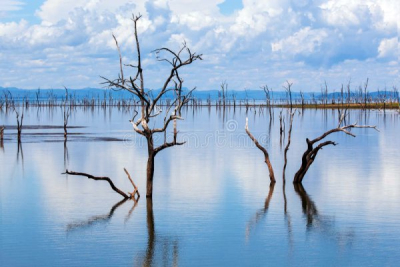They are pieces of dead wood floating down a stream or river, having broken off from a tree that was growing near the water body. These woody remnants embark on a journey across the waters, creating a new future for them.
Ever seen pieces of dead wood drifting down streams or rivers? These pieces of wood are on a journey, sailing across the waters, carried by the currents as they move to embark on a new life. Driftwood refers to pieces of wood that were either the trunk or the branches of a tree that grew next to a river and which eventually broke off and fell into the water, thereby embarking on an odyssey across the river.
The driftwood that starts off on the journey from the forest can have a multitude of “afterlives”. It can either end up on the ocean bed, get washed up on the beach, or even get refashioned into an artefact!
Once a dead log of wood becomes driftwood, it starts off on an adventure, an adventure dictated by the elements, exploring uncharted waters and eventually reaching its final destination. If you have been to the beach you must have come across driftwood.
Sometimes they may just be twigs, lying like debris on the beach or they can appear like an exquisite piece of wooden art sculpted by an artist. The driftwood always enriches the ecosystem it eventually visits. It might even have inspired us to create our first wooden rafts and boats. Dead trees have even been used as small watercraft or carriers. Sometimes the driftwood is in itself a tiny ecosystem. It feeds and even gives shelter to tiny beings such as insects, birds, etc.
On some occasions, these driftwood pieces that get carried by the waters become tangled in large groups called logjams and can sometimes clog a river. We even have logjams that are hundreds of years old. But in most cases, the driftwood keeps flowing downstream, eventually ending up in a new environment like a lakeshore or beach.
They also become a buffer against erosion in erosion-prone ecosystems such as open beaches. They even carry seeds front the forest to the coast which may germinate. Large pieces of wood are used as shelter by beach-dwelling animals. For instance, some shorebirds nest beside driftwood.
Driftwood also has an aesthetic and artistic value. The many forces of nature that have acted on the driftwood lead to the formation of intricate and ornate swirls and whorls and patterns. Driftwood is sought out by artists who turn it into artefacts.
Picture Credit: Google





